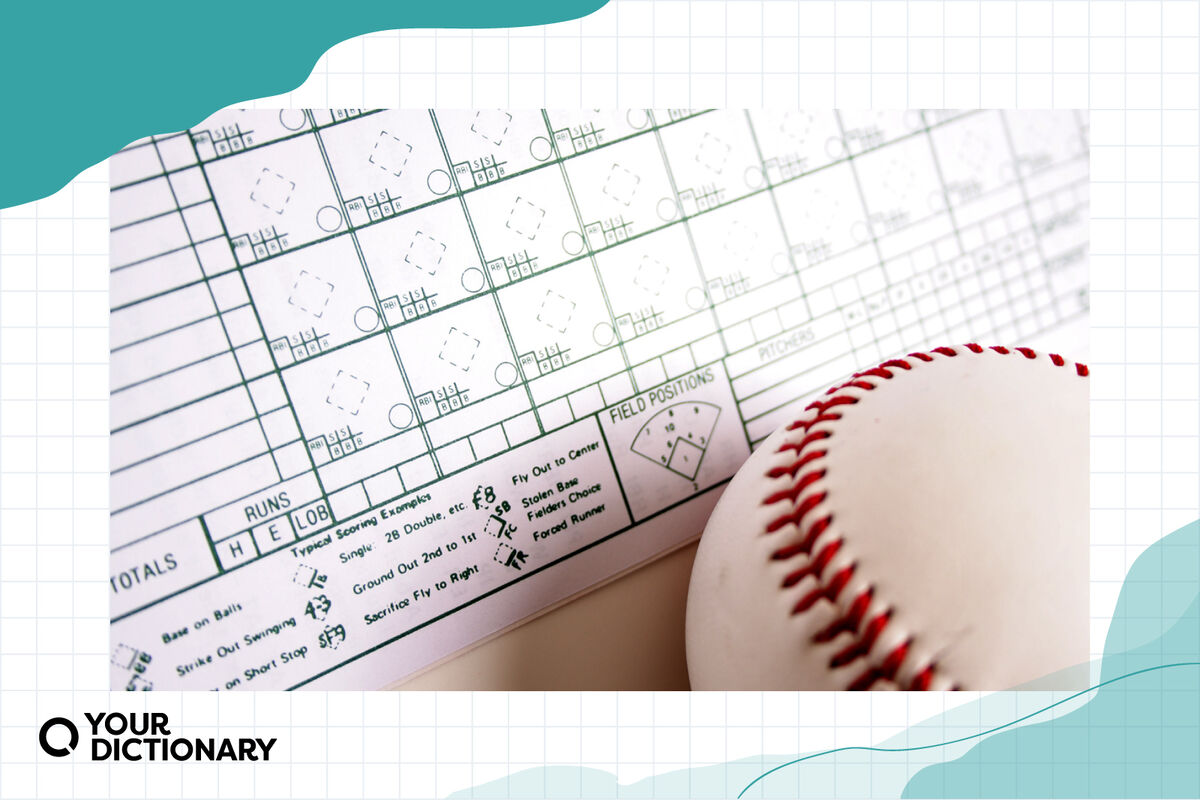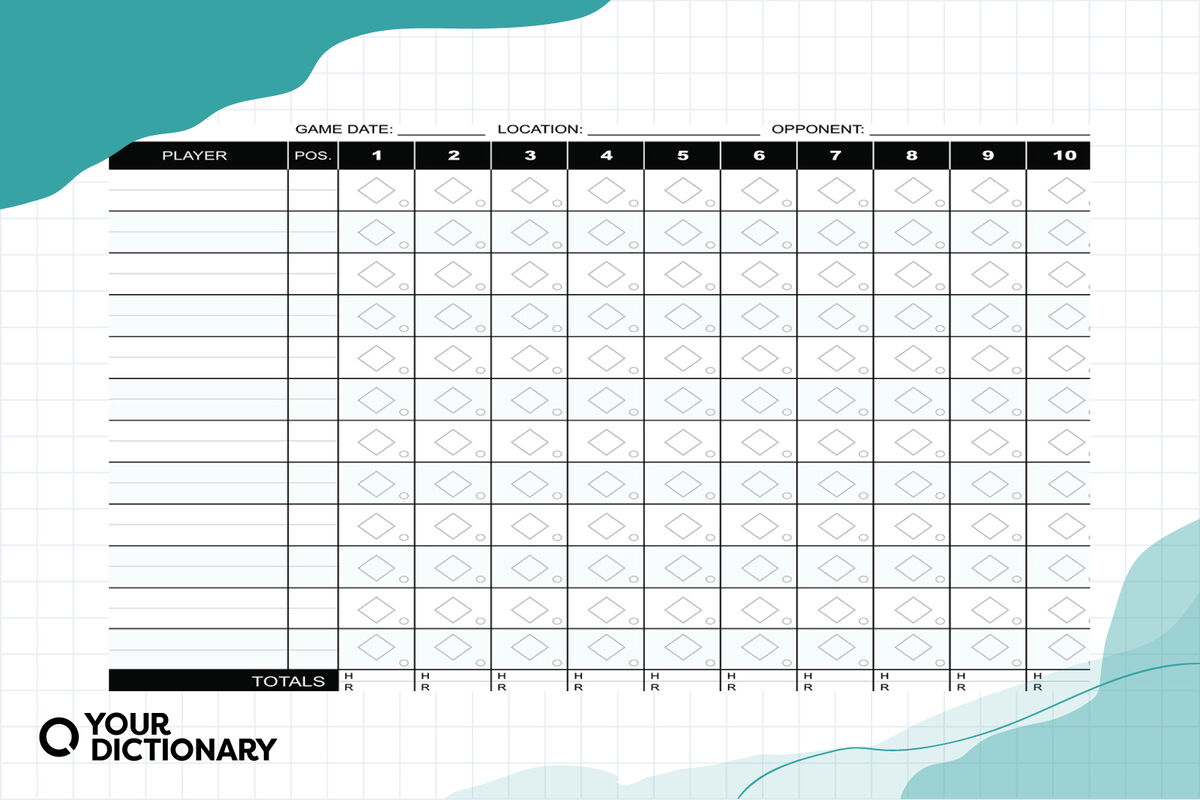
You love watching baseball, but you don’t like the little scoreboard in the corner of your screen. How can one little logo capture the drama of a gripping baseball game? It can’t — which is why Little League scorekeepers, Major League scorekeepers, and hardcore baseball fans prefer tracking the action with their own scorecard. Once you know the shorthand for baseball scorecards, you’ll never look at that little scoreboard on your screen again.
Baseball Scorecard Abbreviations
If you’re using a baseball scorecard book, the space you have to write in is extremely small. That’s where abbreviations come in. You can add a lot more information in a small space when you use baseball shorthand.
Position Numbers
You abbreviate each baseball position using a standard number. That way, you don’t have to write the player’s name or their position to record a fielding play.
When you see numbers separated by dashes, like 6-3 for example, it shows you which players touched the ball and in what order.
- 1 - Pitcher
- 2 - Catcher
- 3 - First baseman
- 4 - Second baseman
- 5 - Third baseman
- 6 - Shortstop
- 7 - Left fielder
- 8 - Center fielder
- 9 - Right fielder
- DH - Designated hitter
- POS - Position (scorecard column heading, where you write the position number)
- # - Player number (scorecard column heading, where you write the player’s jersey number)
Abbreviations for Game Action
When players are at bat, you can use shorthand to show you what kind of hit they got (or if they didn’t get one).
- - - Single
- = - Double
- 1B - Single
- 2B - Double
- 3B - Triple (also written as three short lines on top of each other)
- A - Assist
- B - Ball or Bunt
- BB - Base on Balls (walked to first on Ball 4)
- BK - Balk
- BS - Blown Save
- BT - Bunt
- Circled 1 - First out for the team at bat
- Circled 2 - Second out for the team at bat
- Circled 3 - Third out for the team at bat
- CG - Complete Game
- CS - Caught Stealing
- DP - Double Play
- E - Error
- Et - Error on Throw
- F - Flyout or Foul
- F (followed by a number 1-9) - Player who caught the flyout ball
- FC - Fielder’s choice
- FO - Force Out
- G - Game
- GIDP - Grounded Into Double Play
- H - Hit
- HB - Hit By Ball
- HBP or HP - Hit By Pitch
- HR - Homerun (also written as four short lines on top of each other)
- I - Interference
- IBB - Intentional Walk (Base on Balls)
- IP - Illegal Pitch
- K - Strikeout
- ꓘ or Kc - Strikeout (Called; batter doesn’t swing at the third strike)
- Ks - Strikeout (Swinging)
- L - Line drive or Left
- LD - Line Drive
- OF - Outfield
- P - Popup
- PB - Passed Ball
- PH - Pinch Hit
- PO - Putout
- R - Run or Right
- RBI - Runs Batted In
- RS - Runners Stranded
- S - Strike or Single
- SAC or SH - Sacrifice Hit
- SB - Stolen Base
- SF - Sacrifice Fly
- SHO - Shutout
- T - Triple
- TP - Triple Play
- U - Unassisted Putout
- W - Walk
- WP - Wild Pitch
Baseball Scorecard Symbols
Most baseball scorecards include at least a column for each player’s name, a column for their position number, and room to score about 10 innings. Familiarize yourself with basic baseball scoring symbols to understand what's on the scorecards.
- Write each player’s last name and first initial, listed in their batting order for this game.
- Rows correspond to the players.
- Numbers at the top of columns correspond to the innings.
- The small diamond in each square represents the baseball diamond.
- Each corner of the small diamond shape represents a base with the point closest to you being home plate.
- Drawn or darkened line from home plate to 1st base - Player made it to first base.
- Drawn or darkened line from 1st base to 2nd base - Player made it to second base.
- Drawn or darkened line from 2nd base to 3rd base - Player made it to third base.
- Drawn or darkened line from 3rd base to home plate - Player made it to home base.
- Fully colored in diamond - Player scored a run
- A partial line from one base to the next indicates the player got out on or before reaching the further base.

Baseball Scoreboard Abbreviations
Scoreboards at baseball fields typically use many of the same abbreviations you would use for a baseball scorecard. Each field has its own style, so you may see a variety of different baseball scoreboards throughout the world.
One of the simplest formats for a baseball scoreboard is the line score.
- Top Team Abbreviation - Visiting team
- Bottom Team Abbreviation - Home team
- 1-9 - Innings
- R - Runs (the score)
- H - Hits (the number of times batters reached first base successfully, excluding walks)
- E - Errors (total mistakes by the team that should have resulted in an out)
- P - Pitches (number of pitches thrown by the team)
Additionally, the lights or circles under the words ball, strike, and out will be filled in or lit up to show the number of balls, strikes, or outs.

Keep Score at the Ball Game
Some baseball scorecards and scoreboards also include basic baseball stat abbreviations for individual players, so it’s important to learn those too. Once you’ve got baseball scoring jargon down, take yourself out to the ball game and give scorekeeping a try! If you love learning about baseball, explore some fun baseball facts.